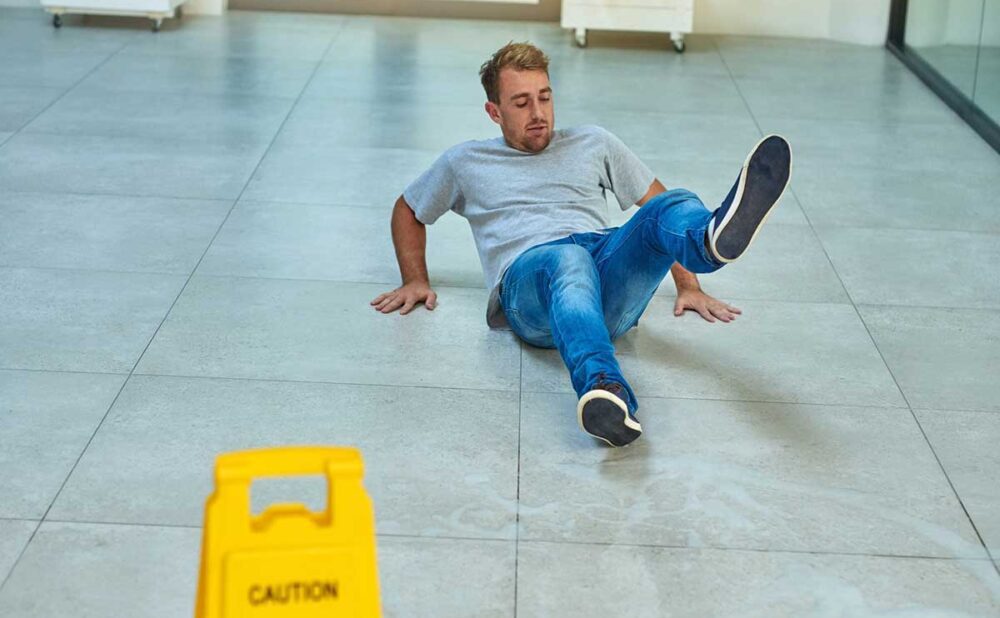Keys to A Successful Premises Liability Claim in Georgia
In Georgia, a premises liability or slip and fall case is a type of personal injury claim in which the plaintiff (the person who was injured) claims that the defendant (the property owner or occupier) is responsible for their injuries because of a hazardous condition on the property. To bring a successful premises liability case in Georgia, the plaintiff must show that the property owner or occupier had superior knowledge of the hazardous condition, and that they failed to take reasonable steps to fix or warn about the hazard. If the Plaintiff succeeds, the insurance company of the property owner will often pay to settle the claim. The relevant statute or code in Georgia is O.C.G.A. 51-3-1 (2010).
To establish superior knowledge, the plaintiff must show that the property owner or occupier knew about the hazardous condition, or that they should have known about it through the exercise of reasonable care. This means that the property owner or occupier should have discovered the hazard through regular inspections of the property, or through other means that a reasonable person would have used to identify potential hazards. Courts refer this to actual or constructive knowledge of the property owner.
Be careful, however. If the plaintiff had equal knowledge of the hazard to the property owner, then the property owner does not have superior knowledge but equal knowledge to that of the plaintiff. In most scenarios, this will negate the plaintiff’s claim.
Once the plaintiff has established that the property owner or occupier had superior knowledge of the hazardous condition, they must also show that the property owner or occupier failed to take reasonable steps to fix or warn about the hazard. This means that the property owner or occupier must have acted unreasonably in failing to fix the hazard, or in failing to provide adequate warning of the hazard to visitors or invitees on the property.
To prove that the property owner or occupier acted unreasonably, the plaintiff must show that the hazardous condition posed a significant risk of injury to visitors or invitees, and that the property owner or occupier failed to take reasonable steps to fix or warn about the hazard despite this risk. For example, if a property owner or occupier knew about a wet and slippery floor in a grocery store and failed to put up a warning sign or place a mat on the floor to warn customers of the hazard, they may be found to have acted unreasonably and therefore be liable for any injuries that result from the hazardous condition.
There are several ways that a plaintiff can show that a property owner was aware or had knowledge of a dangerous condition on the property. These may include:
- Showing that the property owner was directly notified of the dangerous condition. For example, if the plaintiff notified the property owner about the dangerous condition PRIOR to the fall, this can be used as evidence that the property owner was aware of the hazard. This type of notice often arises in a landlord / tenant relationship.
- Demonstrating that the dangerous condition was visible and obvious. If the hazard was readily apparent, it may be reasonable to assume that the property owner was aware of it. However, the plaintiff needs to be careful because if he or she had equal knowledge of an open and obvious hazard, the Court may determine he or she had equal knowledge of the danger and therefore no claim.
- Presenting evidence that the dangerous condition had existed for a long period of time. If the hazard had been present for an extended period, it may be more likely that the property owner was aware of it. If there is not much evidence of how long the dangerous condition was present, a plaintiff can show the property owner lacked a reasonable inspection procedure, and if the property owner had a sufficient inspection procedure than the property owner would have discovered the defect.
- Showing that the property owner had previously received complaints about the dangerous condition or that others had previously fallen. If other individuals had previously notified the property owner about the hazard, this can be used as evidence that the property owner was aware of the danger. This type of evidence is referred to as “other similar incidents” and can be very persuasive in court.
- Demonstrating that the property owner lacked a regular practice of inspecting the property for hazards. If the property owner failed to have or implement a regular routine of inspecting the property and addressing any hazards, it may be more likely that the court will attribute constructive knowledge of the dangerous condition, which is legally equivalent to actual knowledge of the condition.
The next step is to show that the dangerous condition on the property caused the plaintiff’s injury. This requires the plaintiff to provide evidence of the specific hazard that caused the injury, as well as evidence that the injury was a direct result of the hazard. This may include eyewitness testimony, medical records, and other relevant evidence.
Finally, the plaintiff must show that the injury resulted in damages, such as medical expenses, lost wages, and pain and suffering. The plaintiff must provide evidence to support their claims of damages, such as medical bills and pay stubs.
If you or a loved one has any questions about a slip, trip, or fall, or would like to speak to a qualified personal injury attorney, contact The Jewkes Firm personal injury attorneys serving all of Atlanta and Georgia.




